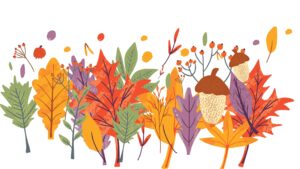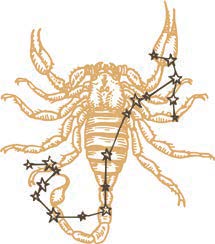
September Books
FICTION
The Left-Handed Booksellers of London, by Garth Nix
When is a bookseller more than simply a person who sells books? When they are one of the left-handed booksellers of London, of course. And Merlin, a mythical-creature-explaining, weapon-at-the-ready, failed bookshop clerk, is one of the most legendary left-handed booksellers of them all. When budding art student Susan Arkshaw wanders into Merlin’s path while searching for her father, her life may never be the same. Quirky, fast-paced, fantasy fun just perfect for fans of Night Circus, Caraval and Jackaby, this little gem is going to be at the top of the recommendations list for the fall.
The Talented Miss Farwell, by Emily Gray Tedrowe
Miss Farwell is the bookkeeper for a small town when she discovers her love of art. Moving funds around, she “borrows” to acquire art, then sells it for a profit, repaying the “loan.” But things begin to get out of hand. Will she get caught? It’s amazing how hard it is to change your ways when you’ve been having so much fun!
Monogamy, by Sue Miller
Annie and Graham have a comfortable life and a comfortable marriage in Boston. She is a photographer, and he owns a bookstore. Her personality is rather reserved, while his is loving and larger than life. They have two adult children, a son from his first marriage, and a daughter together. They enjoy a close relationship with his ex-wife. When Graham dies suddenly, Annie is at a complete loss in her grief. She also finds herself grappling with rage when she learns that he was unfaithful to her in the days leading to his death. This is an intuitive study of a marriage, friendship, family and how to come to terms with a loved one’s fallibility.
The End of the Day, by Bill Clegg
Told in two different time periods and with three main characters and their families, this is a fabulous tale of coveting what someone else has, making assumptions without knowing all the facts, and making decisions whose ramifications affect many others.
The Evening and the Morning,
by Ken Follett
Thirty years ago, Follett published his most popular novel, The Pillars of the Earth. Now, his masterful prequel, The Evening and the Morning, takes us on an epic journey into a historical past rich with ambition and rivalry, death and birth, love and hate, that will end at the dawn of the Middle Ages, where Pillars begins.
NONFICTION
ArtCurious: Stories of the Unexpected, Slightly Odd, and Strangely Wonderful in Art History, by Jennifer Dasal
ArtCurious is a colorful look at the world of art history, revealing some of the strangest, funniest and most fascinating stories behind the world’s great artists and masterpieces. Through these and other incredible, weird and wonderful tales, ArtCurious presents an engaging look at why art history is, and continues to be, a riveting and relevant world to explore. Dasal is the curator of modern and contemporary art at the North Carolina Museum of Art in Raleigh and host of the independent podcast ArtCurious, started in 2016 and recognized as one of the country’s best podcasts by O, The Oprah Magazine and PC Magazine.
Letters of Note: An Eclectic Collection of Correspondence Deserving of a Wider Audience, compiled by Shaun Usher
In the volume on cats, Florence Nightingale sends care instructions to the woman who has just adopted her angora tomcat, Mr. White. T.S. Eliot issues a rhyming birthday party invitation to all Jellicle cats for his 4-year-old godson. Jack Kerouac’s mother grieves at the death of the family cat. In the volume on music, Keith Richards tells his aunt about bumping into a former schoolmate named Mick Jagger, who also loves Chuck Berry. Yo-Yo Ma wonders whether Leonard Bernstein remembers introducing him onstage as a young boy. A Harvard psychiatrist begs CVS to change their on-hold music. Riffing on their passions and surroundings, the artists and entertainers in this volume candidly reveal the sources of their inspiration, what music means to them, why they create it, and so much more.
Our Tarot, by Sarah Shipman
Jane Addams, Benazir Bhutto, Lucrezia Borgia, Anne Frank, Frida Kahlo, Beatrix Potter, Florence Nightingale, Nefertari, Elizabeth I, Cleopatra, Marie Curie, Zora Neale Hurston, Sophie Scholl, Eleanor Roosevelt and Ida B. Wells are all featured in this traditional yet most unusual tarot deck. From 1300 BCE to the late 20th century, the women depicted in the deck represent many ethnicities, creeds, socioeconomic classes, sexualities, ages and abilities and have all influenced their world.
CHILDREN’S BOOKS
Ty’s Travels: All Aboard, by Kelly Starling Lyons
The first in a brand-new “I Can Read” series from the Coretta Scott King award-winning author, Ty’s Travels is perfect for those readers just beginning to read on their own. With family, adventure and creative play, Ty is really going places, and young readers will delight in reading along as they turn the page to see just where Ty may end up next! (Ages 4-6.)
How to Read to a Grandma or Grandpa,
by Jean Reagan
In bookstores and in libraries, with voices quiet or voices LOUD, books are best when shared with someone — and even more fun when that someone is a grandma or grandpa. In this latest installment in her super cute “How To” series, Reagan shows how wonderful books can be when shared with someone you love. This is the perfect title for Grandparents Day, Sunday, Sept. 13. (Ages 3-8.)
Wild Symphony,
by Dan Brown
Yes, that Dan Brown. There’s more to life than meets the eye, and there’s more to Wild Symphony than just a simple picture book. There are poems (20 of them), adorable animals (bouncing kangaroos, clumsy kittens and a cheetah chase), and even an animal orchestra! Most importantly, though, there are short asides to remind readers to “listen to nature,” “slow down and enjoy today,” and “get back on your feet when you fall down.” The perfect gift for anyone of any age from the author of The Da Vinci Code. (Ages 4-6.)
The Similars, by Rebecca Hanover
Emma’s life was torn apart last summer when she found her best friend, Oliver, dead. Now she has to return to school without him. Her high school, Darkwood Academy, prides itself on its diversity and, because of this, they are the first school to allow clones to attend alongside the “Originals.” One of the clones is of her dead best friend. Throughout the book Emma works to uncover secrets about the “Similars,” discovering surprising twists about Oliver’s death, and learning that she may be more similar to these Similars than she could ever have anticipated. (Ages 14 and up.) (Review by Ella Pate.) PS
Compiled by Kimberly Daniels Taws and Angie Tally





